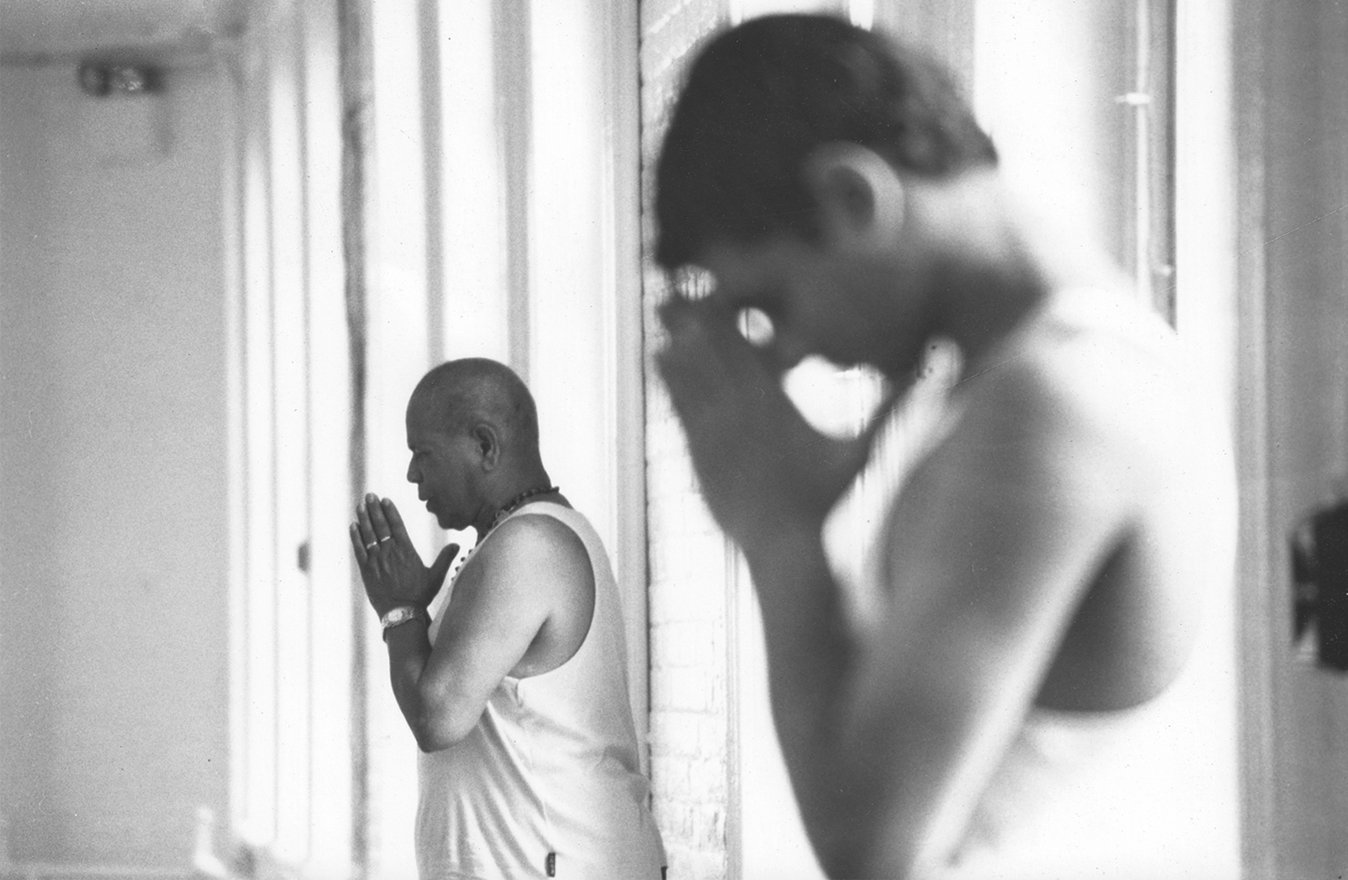
About
Ashtanga Yoga
The oldest remaining specific text was written by Patanjali, who summarised Ashtanga Yoga in the Yoga Sutras. Patanjali’s teachings embraced the eight limbs of yoga.
The modern history of Ashtanga Yoga comes to us through Sri T. Krishnamacharya, who learned the practice from his teacher Rama Mohan Brahmachari, who lived in the Himalayan Mountains near Lake Manasarovar. Krishnamacharya was also able to track down an old copy of a document known as the Yoga Korunta in the old National Archives of India in Calcutta, which detailed philosophies, asanas, bandhas and many other elements of Ashtanga yoga. This was passed down to Sri K. Pattabhi Jois, who spent many years studying and teaching under him.
Sri K. Pattabhi Jois is widely regarded as having popularised modern Ashtanga Yoga, establishing the Shri K Pattabhi Jois Ashtanga Yoga Institute in Mysore, KPJAYI. and devoting his life to the practice before passing away in 2009. The teaching was then passed down to his grandson, my teacher R. Sharath Jois who continued to teacher in India/Mysore up to his passing in 11 November 2024. Sharath Jois opened the Sharath Yoga Centre in 2019 to spread the teachings of yoga. Sharath was a light in the Ashtanga community, and his wisdom will live on through our dedication to the practice.
This method of yoga involves synchronising the breath with a progressive series of postures, a process producing intense internal heat and a profuse, purifying sweat that detoxifies muscles and organs. The result is improved circulation, a light and strong body, and a calm mind. The traditional teaching form is called Mysore Style. It is named after the town of Mysore, located in the South of India.
For more information on Ashtanga Yoga please visit www.sharathyogacentre.com

Ashtanga yoga literally means "eight-limbed yoga," as outlined by the sage Patanjali in the Yoga Sutras. According to Patanjali, the path of internal purification for revealing the Universal Self consists of the following eight spiritual practices:
Yama
Niyama
Asana
Pranayama
Pratyahara
Dharana
Dhyana
Samadhi
AN OVERVIEW OF THE EIGHT LIMBS OF YOGA
The Yamas are the way that we regulate our behaviour in relation to others. The Yamas include ahimsa (non-violence or non-harming), satya (truthfulness), asteya (non-stealing), bramacharya (the controlling of sexual energy), and aparigraha (literally means non-grasping).
The Niyamas are rules of personal behavior. They are observances that are important for progression on the path of yoga. The Niyamas include saucha (cleanliness or purification), santosha (contentment), tapas (discipline or austerity), svadhyaya (self study), and Ishvara Pranidhana (literally means depositing yourself in Īśvara, the supreme soul. It is an understanding that there is a higher power).
Asana is the third limb and refers to the āsanas that are practiced in yoga. Patañjali gives no detail about the practice of āsanas apart from the qualities which you should aim to find within them and the results of practice. He states that you should be steady and comfortable and should aim to eliminate all unnecessary tension, with only the amount of effort necessary to maintain the integrity of the āsana.
Pranayama means regulating and controlling the breathing. There are thousands of different prāṇāyāmas of which a few are useful. Before you practice these prāṇāyāmas, you should first purify and stabilizes the body and mind through āsana practice with a focus on deep and even diaphragmatic breathing. The breathing technique used during āsana practice is, in fact, a simple prāṇāyāma. Its consistent practice gives profound results on the physical and mental level. Due to its powerful nature, more advanced prāṇāyāma should only be learned directly from a qualified teacher.
Pratyahara can be translated as withdrawal or purification of the sense organs. This means that the senses serve the mind faithfully and are under it’s control, rather than pulling the mind in unwanted directions. In perfection of pratyāhāra, Patañjali says there is complete mastery over the senses.
Dharana refers to concentration, which is the ability of the mind to focus entirely in a single direction.
Dhyana is the practice of meditation.
Samadhi is merging with the divine. It is described as complete absorption of the mind with the object of focus, as if the mind takes the form of the object and in which you lose awareness of your own identity and then Patañjali says “only the form of the object shines.”
The Tristhana method is often described as the distinguishing characteristic of Ashtanga Yoga. Tristhana refers to the union of "three places of attention or action": breath, posture and Dristhi [looking place]. These three are very important for yoga practice, and cover three levels of purification: the body, nervous system and mind. They are always performed in conjunction with each other". The actual breathing technique used during practice is simply called “deep breathing with sound.” Deep breathing with sound has a soothing effect on our nervous system, helping us to stay calm and focused during the physical, mental, and emotional stress often brought upon by challenging asana.
Posture, or asana, is the second pillar of the Tristana Method. Asana is an ideal vehicle for to focus our attention on the subtle sensations within the body. Focusing your attention on the bandhas, the contraction on the pelvic floor and drawing in of the low belly, is a wonderful way to tune inward into the subtle sensations
The third pillar of the Tristana Method is drishti, or gaze. Each posture in the ashtanga yoga system has a specific drishti.
There are 9 drishtis: upward, nose, naval, thumb, fingers, toes, third eye, left, or right. The gazing point of each posture depends on the position of the body and the intended direction of energy. As with each of the pillars of the tristana method, there are both practical reasons to focus our gaze, and spiritual ones.
For the list of authorized teachers please check this link:




Class Schedule
Join me on the mat